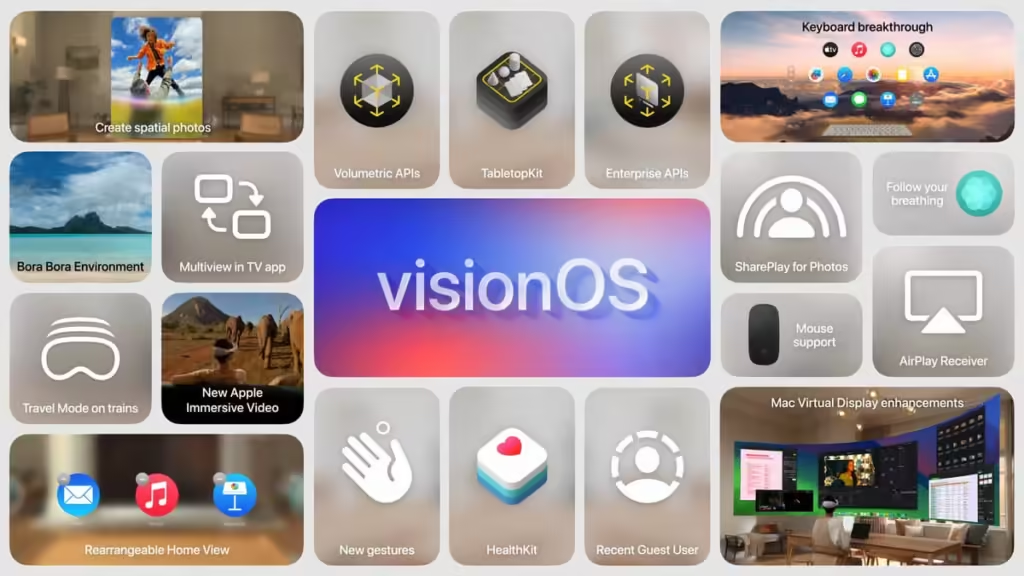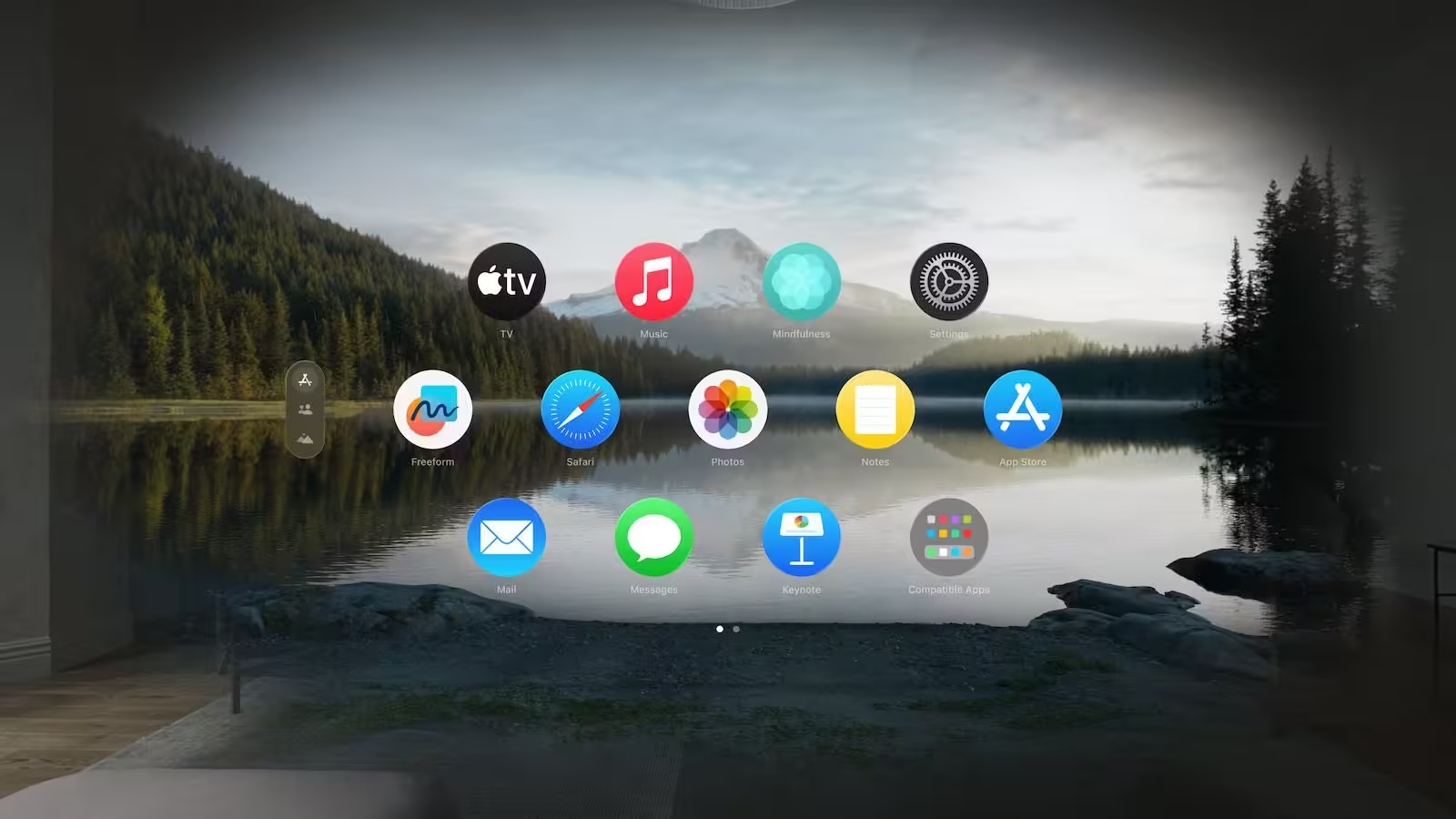As augmented reality (AR) continues to evolve, 2024 marks a pivotal year for AR-enabled iOS apps, thanks to the development of VisionOS. Apple’s innovative operating system is designed specifically for augmented reality and spatial computing, offering developers the tools they need to create immersive, interactive experiences. In this post, we’ll explore how VisionOS is set to transform AR development for iOS, why it matters, and how you can get ahead by mastering this cutting-edge technology.
What is VisionOS?
VisionOS is Apple’s dedicated operating system for augmented reality. Building on the success of ARKit, VisionOS is crafted to deliver more advanced and immersive AR experiences. It takes full advantage of the hardware capabilities of the latest Apple devices, such as iPhones and iPads, while also being optimized for future AR-enabled hardware, like Apple’s rumored mixed-reality headset.
This system provides developers with a robust set of APIs, frameworks, and tools, all designed to make the creation of AR apps more intuitive and seamless. From spatial mapping and object recognition to real-time interaction and rendering, VisionOS opens the door to a new generation of AR applications.
Why VisionOS is a Game-Changer for iOS Developers
1. Immersive User Experiences
VisionOS allows developers to go beyond traditional app experiences by integrating digital content with the real world. With AR, users can interact with apps in their environment, creating a level of engagement previously unattainable. Whether it’s AR-based games, navigation, education, or retail, VisionOS helps developers build apps that feel truly integrated into users’ everyday lives.
2. Advanced Spatial Computing
A key feature of VisionOS is its ability to understand and interpret the user’s surroundings. It uses real-time spatial mapping and object recognition to blend virtual objects into the physical world. Developers can now design AR experiences where digital objects are aware of walls, surfaces, and other real-world elements, enabling more realistic interactions.
3. Real-Time Performance Optimization
VisionOS introduces performance optimizations specifically tailored for AR. By leveraging the powerful hardware in Apple devices, developers can create smooth, responsive AR experiences without lag or performance degradation. This is crucial when dealing with real-time graphics rendering and user interaction.
4. Cross-Device Compatibility
With VisionOS, developers can create AR apps that run seamlessly across Apple devices. Whether on iPhones, iPads, or the upcoming AR headset, the OS ensures that your AR app scales well across different devices, delivering consistent performance and user experience.
How to Get Started with VisionOS
To start mastering VisionOS, follow these steps:
1. Learn the Core ARKit Framework
While VisionOS builds upon ARKit, it’s essential to first master the basics. Familiarize yourself with ARKit’s core capabilities, including plane detection, object tracking, and face tracking. ARKit serves as the foundation for VisionOS, and a solid understanding will make transitioning to VisionOS easier.
2. Explore VisionOS APIs and Documentation
Apple has provided a comprehensive set of tools and documentation to help developers build AR apps. VisionOS includes new APIs that enable more advanced spatial awareness and 3D interaction. Some of the key APIs to explore are:
• ARSession: Manages AR tracking and session configuration.
• RealityKit: Provides high-performance 3D rendering and physics simulation.
• SpatialScene: Allows for more complex, interactive scenes that blend virtual and real-world objects.
3. Leverage SwiftUI for AR Interfaces
With VisionOS, Apple has integrated SwiftUI to simplify UI design in AR apps. SwiftUI allows developers to build dynamic, declarative user interfaces that can adapt to the real-world environment. Using SwiftUI alongside VisionOS means less boilerplate code and more intuitive design workflows.
4. Develop AR Apps with Real-Time Feedback
VisionOS’s simulation tools offer real-time feedback during development, allowing you to test AR interactions and visual effects directly on your device. This makes it easier to fine-tune your app and ensure that your AR elements align perfectly with the physical world.
Real-World Applications of VisionOS in AR Development
Several industries are already benefitting from AR-enabled apps, and VisionOS will only expand these possibilities in 2024. Here are a few examples:
• Retail: Retailers can create virtual shopping experiences where customers can preview products in their own homes before purchasing. For example, furniture retailers can develop apps that allow users to visualize how a piece will look in their living room.
• Healthcare: Medical professionals can use AR to overlay vital information during surgeries or medical procedures. VisionOS can assist in building apps that provide real-time guidance, enhancing precision and safety.
• Education: Educators are increasingly adopting AR for more engaging, interactive learning. VisionOS enables developers to build educational apps where students can explore historical sites, conduct virtual science experiments, or interact with 3D models of the human body.
• Gaming: The gaming industry stands to gain the most from VisionOS, with developers creating more immersive AR games where players interact with virtual objects in their physical environment. Imagine a game where your living room becomes the battlefield, or you must solve puzzles using objects in your home.

The Future of VisionOS
Apple’s commitment to augmented reality shows no signs of slowing down, and VisionOS represents the next leap in AR technology. In the coming years, we expect VisionOS to integrate even more sophisticated AI-driven features, such as gesture recognition, voice commands, and advanced machine learning capabilities.
For developers, mastering VisionOS now will open up vast opportunities to create AR apps that push the boundaries of what’s possible. As users demand more immersive, interactive experiences, those who are proficient in VisionOS will be at the forefront of iOS app development.
Conclusion
VisionOS is set to transform the landscape of AR-enabled iOS apps, offering new tools and capabilities to create immersive, interactive user experiences. By leveraging advanced spatial computing, performance optimizations, and seamless cross-device compatibility, developers can unlock the full potential of AR and position themselves for success in 2024 and beyond.
Mastering VisionOS today is the key to building the next generation of augmented reality apps that deliver both high performance and deep user engagement.
Internal Links:

